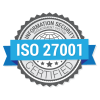If you are part of a large organization, it almost certainly uses over 100 interconnected technology services and product offerings. Whether these services are telecoms or ICT related, they are generating frequent and complex bills. Measuring the outcomes yielded by these services against their cost is hard, meaning that most will spend up to 50% more than necessary in the long run.
Letting the Numbers Speak
At the root of this problem is over-charging for technology services that may also be under-used, with losses left to compound for years on end. To put this into perspective, a business spending $2 million a year on services could save up to $375,000 immediately, but that’s not all. There are likely to also be opportunities to save a further $50,000 to $300,000 in the mid-term, and as much as $500,000 in the long-term.
There are different reasons these savings are possible depending on their timeframes. To make immediate service spend savings, there are claimable opportunities that can be identified without changing your existing supplier. Mid-term savings can be made by setting up new contracts with those existing suppliers. This is because there is likely to be a better plan available that has gone unnoticed on your part, and unmentioned on the part of your supplier.
The long-term savings are unlocked by carrying out strategic technology migrations and changing your supplier base. While this kind of cost saving opportunity carries the most risk, they are also associated with the greatest rewards. Having showcased the potential scale of these cost savings, we must explore how and why this can be achieved today.
The Outdated ‘Solution’
Traditionally, if you made the effort to find out how much of your service spend was being wasted, a one-off audit would be conducted. These would be carried out by consultants from spend analytics companies, and they would be very expensive. Of the minimal savings that can be uncovered by a rudimentary, manual, one-off activity, the bill would usually be between 30% and 60% of the savings recovered.
It is also worth noting that as part of a typical audit, most expense reduction specialists will advocate that their customers move to an entirely new contract with better discounts. While this will uncover some savings in the mid to long-term, it completely overlooks the opportunity to unlock immediate savings. Additionally, the discounted contract with the new supplier may well provide a lower quality service than the one previously in place.
The Solution That Is Changing the Game
Thinking Machine Systems has made it possible to automatically process PDF invoices, regardless of quantity, supplier, or language. Our solution uses an AI-powered Knowledge Base to effectively match this complex and varied information against hundreds of benchmarks, creating a basis for the immediate and longer-term cost savings discussed earlier. This advantageous position also enables personalised data intelligence that can be used to support future sourcing strategies to make these positive changes permanent.
Our solution is built on what can be considered ‘semantic technologies,’ which have enabled an evolution from simple relational database querying, to inferring logical information relationships to answer questions. This is the kind of dynamic Google revealed in 2012 when it announced its Knowledge Graph.
At Thinking Machine Systems, our solutions are bringing “Web 3.0” effectiveness and efficiency to solving the global billing problem. Get in touch to find out more about the immediate and long-term savings you can make.


